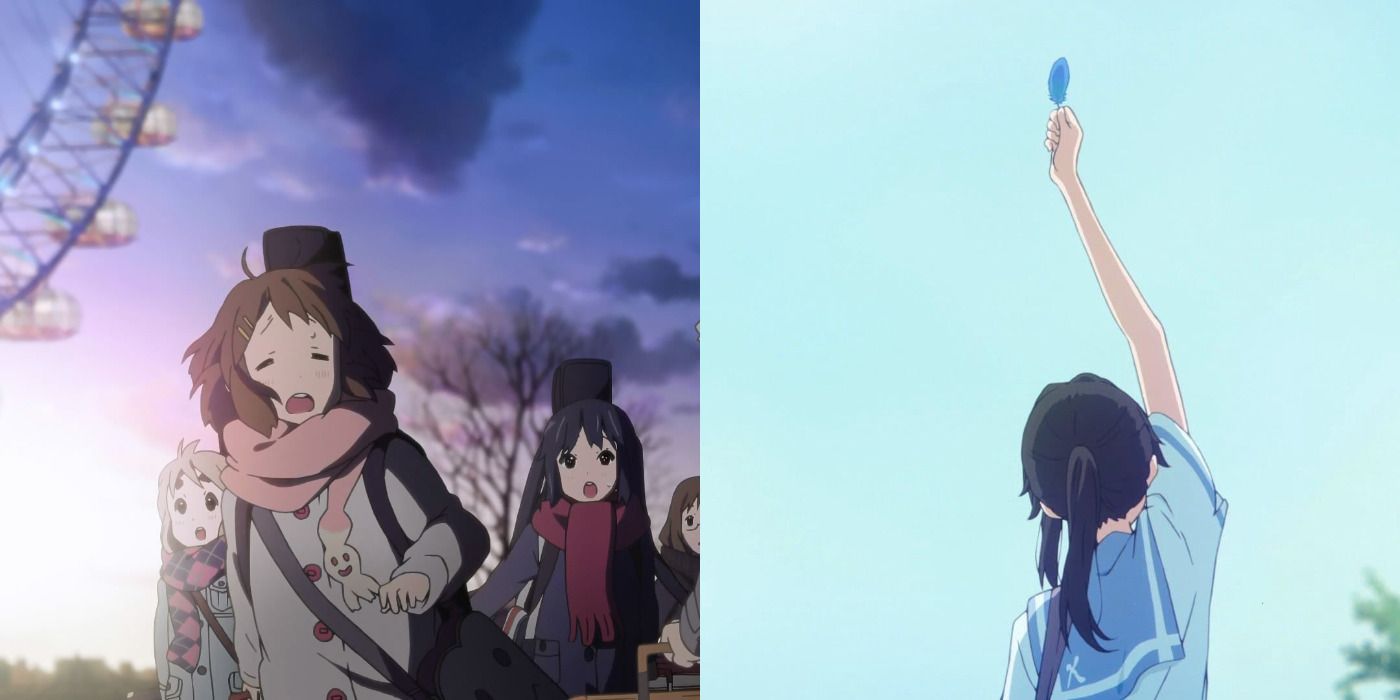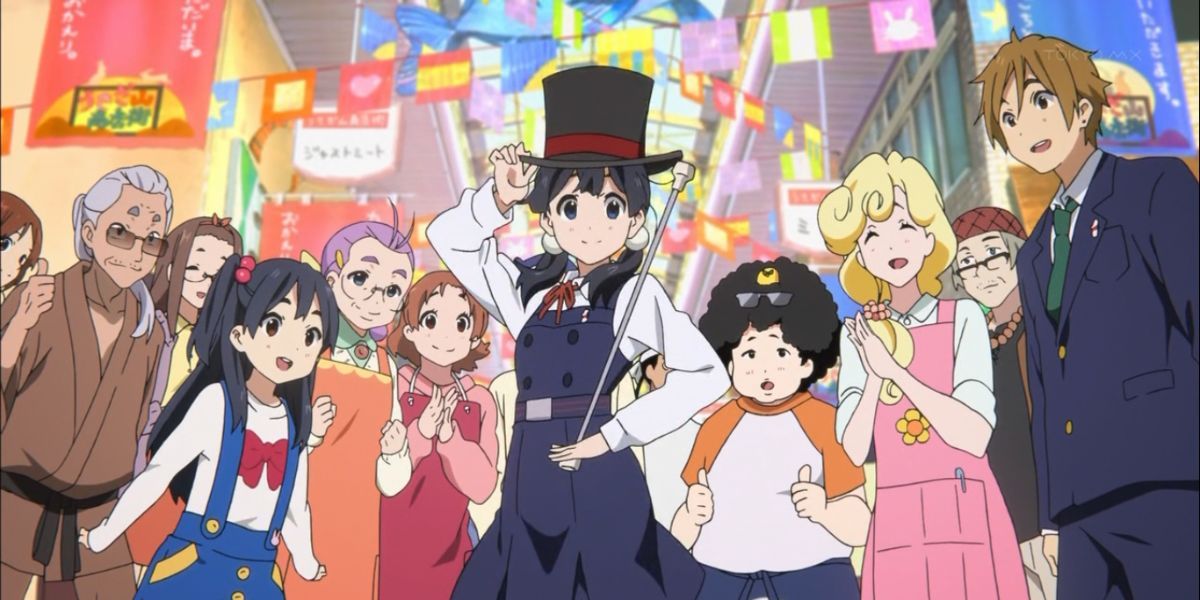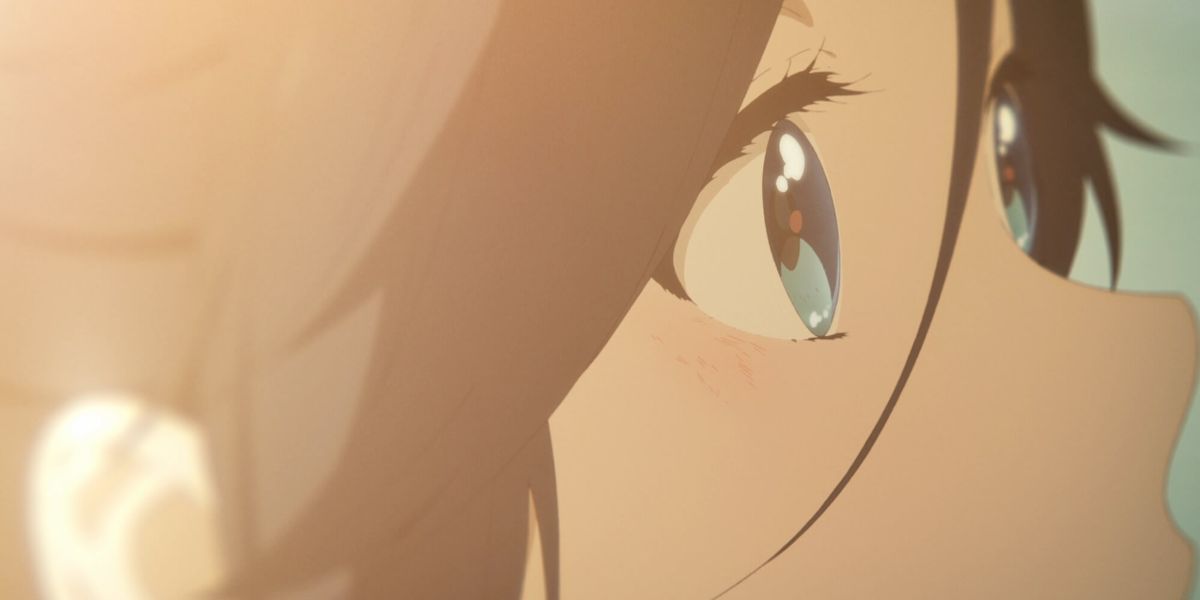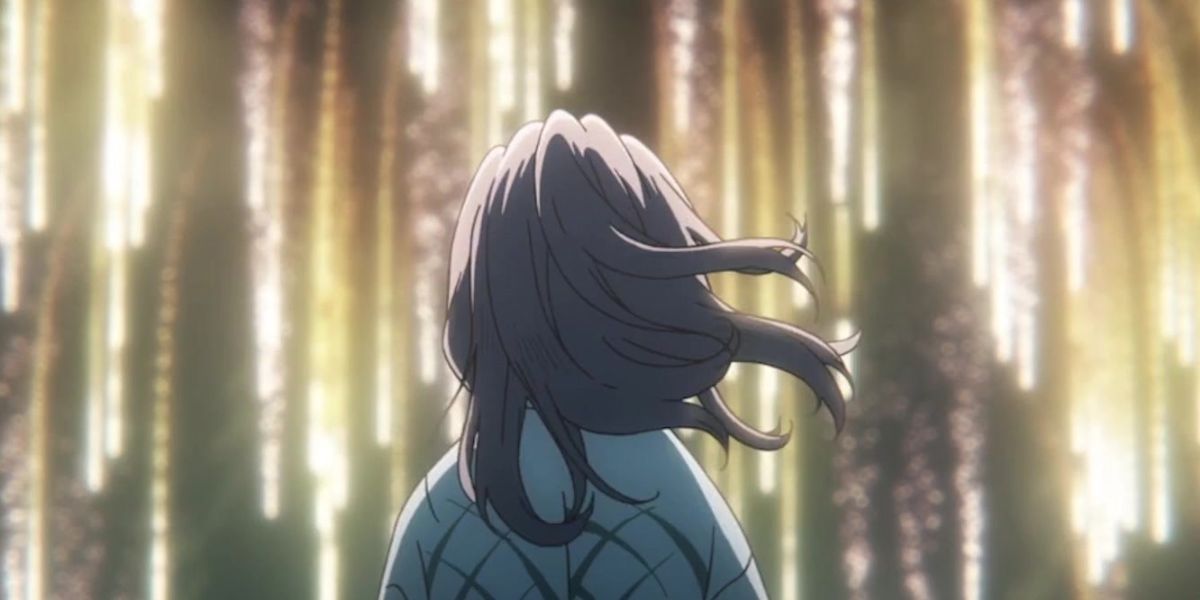Naoko Yamada is one of the anime industry's most prominent female directors, and her recognition is well deserved. Starting out as a director with genre pieces like K-On!, Yamada is consistently able to elevate even conventional premises through attention to detail and a unique focus on the subtleties of character animation. Her later work includes some of the most successful anime films of the last ten years, namely the widely acclaimed A Silent Voice.
Viewed as a whole, Yamada's filmography demonstrates a remarkable range. Although she certainly has a trademark style and favored subject matters, the tonal diversity in her work is immense. Helped along by frequently excellent animation from the studio KyoAni, it's easy to see why she's risen to become one of anime's most impressive talents.
Tamako Market (7.0)
2013's Tamako Market is a laid-back anime, perfect for those looking for a break from a typically action-packed medium. Set in a shopping district populated with colorful business owners, Tamako, the show's protagonist, is the daughter of a resident mochi baker. Her sense of normalcy is disrupted when a strange talking bird, claiming to be a herald from a faraway land, appears in her district and subsequently becomes addicted to her shop's mochi.
Like some of Yamada's other successful anime projects like K-On!, Tamako Market doesn't offer much in the way of dramatic stakes, instead choosing to take its time introducing the cast and fleshing out their relationships at its own pace. There's notably more of a surrealist flair to the design work here than in most of Yamada's other work, which gives Tamako a unique atmosphere and look within her filmography. It also features a more prominent romantic subplot, which is resolved in the well-received Tamako Love Story.
Tamako Love Story (7.1)
As a direct sequel to 2013's Tamako Market, Tamako Love Story is a film considered by many to be the best piece of Tamako media available. Predictably focused more on its titular love story than its prequel was, Tamako Love Story sees its main characters edging closer to their high school graduation, grappling with their future ambitions, and, most importantly, resolving the unaddressed romantic tension between protagonist Tamako and her neighbor Ooji.
Love Story is a fantastic-looking film. The exciting color palette from the original anime makes a return here, but with even more emphasis on evocative lighting work that's instrumental in conveying the mood of each scene. The intensified focus on the core romance also gives the work a more classic shoujo anime vibe, which is a plus. Longtime fans of Yamada's anime will also notice more of her signature style in Love Story -- there's an almost obsessive focus on minute body language to convey emotion, and there's a muted sense of transience that pervades the entire experience.
Liz And The Blue Bird (7.2)
A stand-alone side story to 2015's Hibike Euphonium, Liz and the Blue Bird is perhaps the most Yamada of the anime listed here. It's a radically understated LGBTQ+ love story about two drastically different people, Nozomi and Mizore, trying to navigate the next stages of their lives and figure out what that means for their relationship. The drama here is palpable, but Yamada presents it in an impressively subdued way. Rather than dramatic confrontations with passionate monologues, the audience comes to understand the minds of the film's characters through actions as subtle as a caught breath, or a nervous fidget.
Yamada seems to have been fixated on the two main characters even as early as the production of the original Hibike Euphonium, which explains the film's deliberately myopic focus on the relationship between its two leads. Yamada's talents as a director shine through here, in what is the work that likely best exemplifies her approach to animation. The subtleties of body language during scenes of dialogue are given intense attention, and the camera seemingly refuses to miss out on a single motion, no matter how minute.
K-On! The Movie (7.7)
Hitting theaters after the last episode of the original K-On! anime, the K-On! movie provides an alternate ending of sorts, offering more closure for the show's characters. Although the premise of the film deals with the characters planning and executing a graduation trip to London, the heart of the film is largely about the imminent graduation of the four older members of the light music club. The film's emotional stakes are derived from how this experience will change the lives of the characters, especially with regards to Azusa, the 5th and youngest member of the group who will inherit the club once her seniors have departed.
As K-On! grew in popularity, so too did Yamada's confidence as a director apparently. What starts out as a well-executed but fairly conventional slice of life show morphs into a masterwork of the genre across its run, with the gulf between the movie and K-On!'s early episodes being especially apparent. In Japanese art, the phrase "mono no aware" refers to empathy towards one's environment, or more specifically, a subtle emotional reaction to the realization of the impermanence of things. Legendary filmmaker Yasujiro Ozu is often credited with bringing this concept to film in his stories about people struggling to adapt to societies changing around them, but, when it comes to anime, there are few who can deploy this subtle but poignant approach as well as Yamada does in K-On! The Movie.
K-On! (7.7)
K-On! was Yamada's first outing as series director, having worked as an animator and episode director for KyoAni projects like Clannad and The Melancholy of Haruhi Suzumiya beforehand. As such, the runaway popularity of K-On! was what put Yamada on the map for most anime fans. At first glance, it can be difficult to see why exactly K-On! commands such popularity and critical acclaim -- after all it is a fairly ordinary slice of life setup that follows five girls forming a band in their high school music club. What is it about K-On! that sets it apart so dramatically?
Yamada's obsession with setting does a lot of work to elevate the source material, as does the realism of the interactions between her characters. Fans of slice of life anime will be familiar with the importance of the club room to the structure of these shows, but all too often the club room may just as well exist in some void, and little thought is given to its surroundings or the people who live in them. K-On! understands its characters and sets to be part of a living, breathing environment. The audience gets an acute sense of the setting's topography, and the background characters who flesh out the environments have personalities, names, and recurring appearances. This lends the show an essential sense of believability, which supports a well-realized and endearing cast of characters.
A Silent Voice (8.2)
K-On! might have made Yamada a household name within anime circles, but it's 2016's A Silent Voice that truly broke her into the mainstream, especially with North American audiences. While most of Yamada's other work might be characterized by its subtlety and laid-back charm, A Silent Voice is a harrowing interpersonal drama. Adapted from the manga of the same name, the film follows the protagonist, Shouya, as he struggles with the guilt stemming from his ruthless bullying of a deaf classmate during his childhood.
Stories that are this straightforwardly dramatic are uncommon ground for Yamada, which makes it all the more remarkable that the film received as much international acclaim as it did. Far and away her most recognized work, it was one of the most successful anime films of 2016, second only to Your Name, a movie that it's like in many ways. While it might not play to Yamada's unique strengths as a director to the degree that her other projects have, A Silent Voice is an unflinching and important narrative that touches on topics not often discussed in anime and manga.







